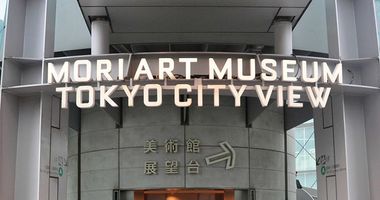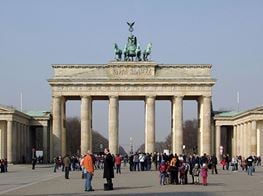David Elliott
Photo: Kate Elliott.

Photo: Kate Elliott.
David Elliott is a British-born curator and writer about modern and contemporary art, currently based in Berlin, Germany.
Elliott has had a long and distinguished career, including Director of MoMA Oxford, the Moderna Museet in Stockholm, the Mori Art Museum in Tokyo and the first Director of Istanbul Modern.
He recently acted as an advisor to the Hong Kong Jockey Club Charitable Trust on the artistic development and programming of the Central Police Station Heritage Site at the eastern end of Hollywood Road in central Hong Kong.
Although all art is tied to its point of origin in some way, quality is not regional and can be found all over the world if one knows how to look for it.
LTYou have had a distinguished and varied career, as Director of several museums around the world including MoMA Oxford, the Moderna Museet in Stockholm, the Mori Art Museum in Tokyo and the first Director of Istanbul Modern. Meanwhile you have conceived and curated several important exhibitions internationally including the 17th Sydney Biennale and the 1st Kiev International Biennial of Contemporary Art. Having worked in such varied locations are there particular characteristics that are evident due to a location or has contemporary art become globalised?
DEI think that the art market has strongly globalising tendencies in that it is tied to a limited price and product structure but contemporary art itself is far from globalised. Although all art is tied to its point of origin in some way, quality is not regional and can be found all over the world if one knows how to look for it.
LTYou were Founding Director of the Mori Art Museum in Tokyo and the first Director of Istanbul Modern. Did these new museums effect a change in the cultural scene of their respective cities and if so how is it manifest?
DEIn Tokyo I was able to break contemporary art out of its specialised audience and attract a broader group of culturally interested people. The conventional wisdom I was told when I arrived there was that the Japanese did not really like contemporary art. In fact, I found that nothing could have been further from the truth as our public really enjoyed discovering new art for themselves when they visited our exhibitions. Of course the quality of what was shown is important and we made sure that this was uniformly high.
In Istanbul, in my relatively short time working there, I was able to show a number of major artists for the first time in that city and also make an exhibition that examined the chronological development of modernity in the Ottoman Empire from the beginning of the nineteenth century to the early years of the Turkish Republic. This was an important show and the first time that such an exhibition had been made.
The global art world needs to be seen from a Hong Kong perspective with a clear emphasis laid on aesthetic quality, whether these ideas are derived from Asian or Western traditions or, as would be appropriate in this case, from an amalgam of both.
LTHong Kong's historic Central Police Station (CPS), is being revitalised with new buildings by Herzog and de Meuron to become a major hub for contemporary art and culture in Hong Kong. You are currently advising the Hong Kong Jockey Club Charitable Trust (who are funding the project) on the artistic development and programming. What is the vision for Hong Kong and contemporary culture?
DEI have stopped advising the HK Jockey Club Charitable Trust as the architectural plan has been finalised and the operation of the art facilities is being considered, but the essential idea behind CPS is to provide a public non-profit contemporary arts and heritage hub in the centre of Hong Kong. This will contribute to existing infrastructure by providing a medium sized Kunsthalle for contemporary art as well as working and exhibition spaces for existing Hong Kong based non-profit arts organisations. The restoration of sixteen heritage buildings on site for cultural use, the two new buildings by Herzog & de Meuron and newly commissioned research on the history of the CPS will enrich considerably the knowledge and architectural quality of this important but neglected part of Hong Kong.
LTHong Kong's international identity is characterised by it's status as a financial and trading hub and reflective of this, is an historically and almost exclusively commercial relationship with culture. Post the 1997 handover, Hong Kong was eclipsed by an awakening art scene in Beijing and competition for commercial real-estate has left little room for public institutions or artistic communities, but recent years have seen a change of sorts. Several leading Western commercial galleries now operate alongside non-profit ventures and large scale institutions are in progress including the Central Police Station and the West Kowloon Cultural District. Do you engage the local population with contemporary art in the same way as you would have approached the Istanbul Modern project or are the local conditions prescriptive to the conceptual planning of contemporary institutions in Hong Kong?
DEBecause cultural infrastructure and political interest in it have been relatively weak in Hong Kong, Hong Kong has been passed by on a lot of potential development. This of course is going to change but there is much catching up to do. The audience is enthusiastic and well informed but looking at art in books or on the net is not the same as actually experiencing it for oneself. So much has not been seen in Hong Kong that the main question will be is 'what art to concentrate on'. I am totally against the idea of parachuting art into one location with the implication that the same thing will work in Istanbul as would in New York or Hong Kong. Such an attitude is completely neo-colonial. The global art world needs to be seen from a Hong Kong perspective with a clear emphasis laid on aesthetic quality, whether these ideas are derived from Asian or Western traditions or, as would be appropriate in this case, from an amalgam of both.
So much has not been seen in Hong Kong that the main question will be is 'what art to concentrate on'. I am totally against the idea of parachuting art into one location with the implication that the same thing will work in Istanbul as would in New York or Hong Kong.
LTReflecting the history of British Colonial culture, the rule of Mainland China, and a very cosmopolitan population, do you perceive a truly unique voice in Hong Kong artists?
DEThe Hong Kong art community is not so large, particularly in relation to the mainland, but by building carefully on the best of what already exists, it can help lead the way in art production and discourse. Its historical role, as an interface between China and the West, provide an important platform for this as well as its distinct economic and legal environment.
LTWhich destinations are currently attracting your attention with respect to new and interesting contemporary art?
DEI am very interested by a group of traditional and avant-garde artists working in Mongolia at the moment as well as by the new generation of Tibetan artists that has emerged over the past decade. India, which has a more deeply rooted history of modernism, is also changing profoundly at the moment and I expect to see very important developments there. In China one of the most interesting developments is the elaboration of conceptual art by such artists as Song Dong, Liu Jianhua and Xu Zhen as well as a radical return to the ethics of brush painting by such artists as Wang Huangsheng whose recent 'abstract' works are a major breakthrough. —[O]











































































































































































